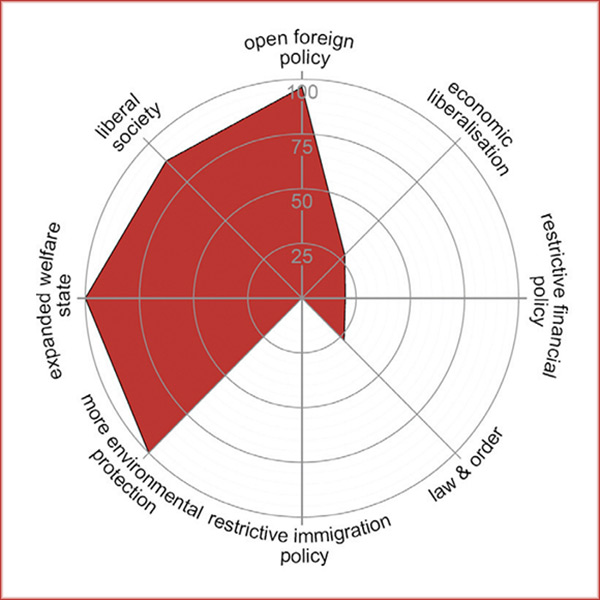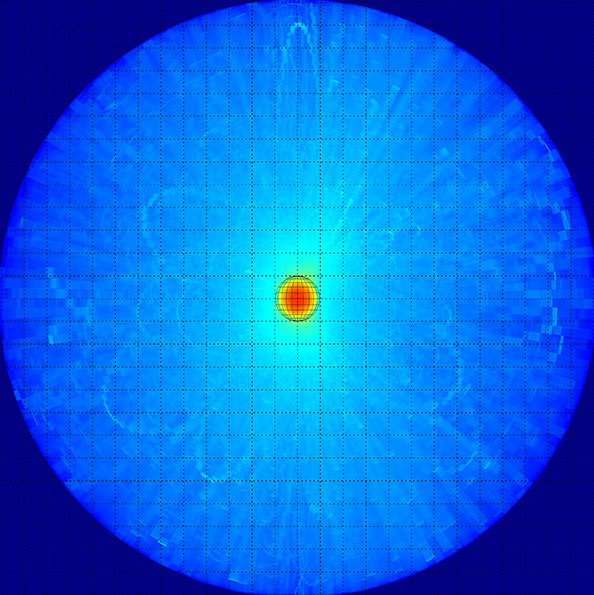Split-second decisions
Neuroscientists are investigating how circuits in the brain control our behaviour in dangerous situations. There’s often only a fraction of a second for us to make up our minds.

The green, fluorescent nerve cells (CRF+) decide whether the mouse will flee or not. | Image: Fadok et al.
When a mouse encounters a snake, it has to decide in a flash what action offers the best chance of survival. Should it enter into paralytic shock, thereby becoming invisible to the predator, or should it flee as quickly as possible? This decision is not made consciously, but is determined by a multitude of factors – such as the distance between the mouse and the snake, the availability of a get-away route, previous experiences, and the state of health of the mouse.
There is a circuit in the brain that is very important for these life-or-death decisions, and it’s located in an almond-shaped area called the ‘amygdala’. “All the information that can influence a behavioural reaction is channelled from the most varied regions of the brain into the amygdala, and processed there”, explains the neuroscientist Andreas Lüthi. He and his working group at the Friedrich Miescher Institute for Biomedical Research in Basel have been investigating what processes then occur in the mouse’s amygdala.
Circuitry controls fear behaviour
Lüthi and his researchers are especially interested in how a decision is made between two completely different forms of behaviour – passive paralytic shock or active flight. In order to find this out, they trained their test animals to fall into paralytic shock when they hear a pure tone, and to display flight behaviour when they hear a mixture of tones. They also used a genetic procedure to alter the behaviour of the different types of nerve cells in the amygdala so that these can be hindered when the mouse is exposed to yellow light. By doing this, the researchers have made it possible to switch off specific groups of nerves and observe what impact it has on the behaviour of the mice.
Their experiment demonstrated that two groups of nerve cells control fear behaviour: one group is responsible for triggering paralytic shock, the other for triggering flight. “It seems that there is a switch in the amygdala that can be turned one way or the other”, says Lüthi. Furthermore, the two nerve groups are closely linked with each other. Activating the paralytic shock hinders the flight response and vice versa. This prevents the amygdala from giving the order for two contradictory forms of behaviour to the muscles.
Understanding glitches better
“In this case, two types of nerve cells work contrary to each other to trigger a clear all-or-nothing reaction”, explains Fritjof Helmchen, one of the directors of the Institute for Brain Research at the University of Zurich. “This experiment is a perfect example of how you can use new methods to study live, non-sedated animals to find out what components in a circuit of nerve cells determine specific patterns of behaviour”. Helmchen was not involved in the study himself, but he believes that findings from this type of experiment could find applications in human medicine in the coming decades, because many mental illnesses arise from altered circuitry and misdirected information flows in the brain.
Lüthi also believes that his results are essentially transferable to humans: “The structure of the amygdala has been largely retained throughout the process of evolution, so it is constructed in the same way in humans as in mice. Anxiety disorders in people often occur because this old system dominates and is very difficult to control consciously”. He also observes that human patterns of behaviour are far more complex and varied: “People often consciously take bigger risks in order to discover new things and perhaps to draw an advantage from it – whereas that would be a poor strategy for a little mouse”.
Yvonne Vahlensieck is a freelance science journalist who lives near Basel.
J. Fadok, S. Krabbe, M. Markovic, J. Courtin, C. Xu, L. Massi, P. Botta, K. Bylund, C. Müller, A. Kovacevic, P. Tovote & A. Lüthi: A competitive inhibitory circuit for selection of active and passive fear responses. Nature (2017)




